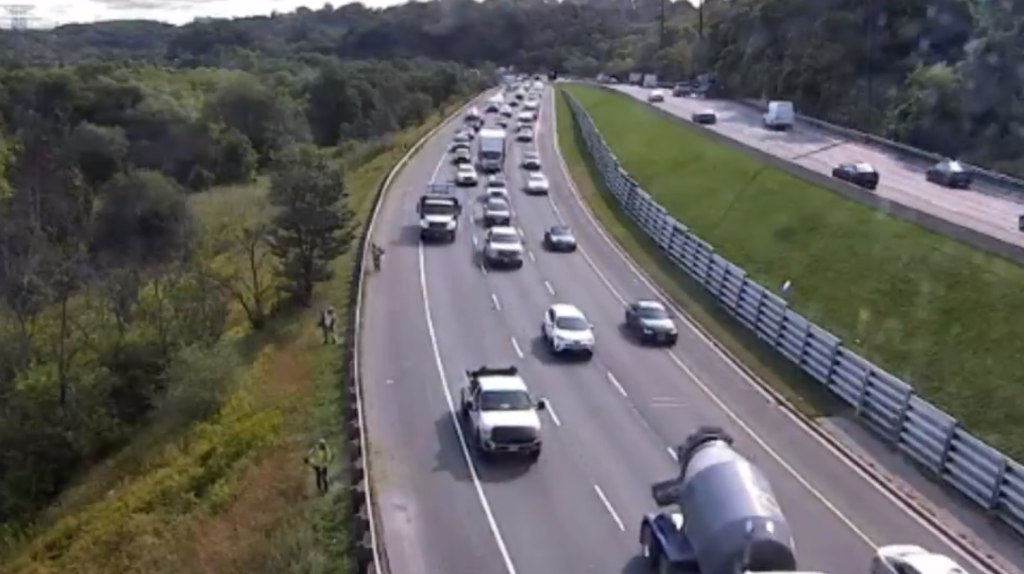2011 census shows Canada is becoming more urban & multi-racial
Posted September 10, 2013 5:52 am.
This article is more than 5 years old.
If the reams of statistics released from the 2011 census and its controversial new cousin, the National Household Survey, teach us anything, it’s that there is no such thing as the quintessential Canadian.
Now that Statistics Canada has published almost all of its findings, Canadians know their country is aging. But they also know the West holds a new allure, and that Canada is becoming increasingly urban, multi-racial, and well-educated.
We often don’t have any children living at home — either because we didn’t have any to begin with or because they’ve grown up and moved away. Younger parents, however, have been bucking the trends and fostering a surprise mini-baby boom of their own.
“We’re very diverse and our diversity is growing even more as time goes by,” said Marc Hamel, census chief for Statistics Canada.
More often than not, Canadians work in services industries. Women are gaining dominance in many new areas of education. And same-sex couples have become an accepted norm.
On Wednesday, the agency will release the final piece of the demographics puzzle: income. From there, it will become clear whether our rich heritage translates into actual riches — whether Canada’s widespread diversity also means widespread prosperity.
The third and final instalment of the National Household Survey will illustrate how many Canadians live below the poverty line, how affordable their homes are, how pervasive government transfers are, where the rich and the poor tend to congregate, and whether young people are struggling.
From there, analysts will grab the data and run, crunching the numbers to eventually determine the gap between rich and poor, to figure out whether the middle class has stagnated, and whether the super-rich are amassing further wealth.
The agency will also be zeroing in on what kind of education makes for a rich Canadian, and putting together a list of what makes a neighbourhood poor.
They are the demographic questions that have defined recent elections in the United States and promise to play prominently here too, as parents worry about their grown children being able to maintain their standard of living.
Politics aside, age has already been shown to be creating its fair share of schisms in Canadian society, said Doug Norris, chief demographer at Environics Analytics. Cities are attracting a dynamic, young population while small towns are in decline as populations dwindle and age.
“That’s going to be a real challenge for us” as city planners and governments figure out where to concentrate the public services needed so acutely by the elderly, Norris said.
It’s a challenge that former Manitoba MP Inky Mark already wrestles with on a daily basis. He still lives in the town of Dauphin, where the population of about 8,000 is slightly lower than it was when he moved there in the early 1970s.
“The kids go to school, grow up and leave, because there’s nothing here, there’s no one here,” Mark said. “They don’t come back.”
The older generation stays behind, however, and is having a hard time finding the social and professional services it needs, he added. “We’re going downhill.”
The country’s suburbs are also in flux.
Families flocked to city outskirts a generation ago to take advantage of large yards, green space and homes they could actually afford. Now that the children have left home, elderly parents are moving into nearby condos and their houses are often snapped up by new, extended immigrant families.
So suburban policy makers need to deal with the implications of aging and and cultural diversity at the same time, said Glenn Miller, vice-president of education and research at the Canadian Urban Institute.
When it comes to designing institutions and social services for such communities, “at a high level, we’ve got to be aware of one size fits all,” Miller said.
Edmonton is basking in its surge of diversity and growth even as the city’s population strains the capacity of infrastructure, libraries, transit and sports facilities, said city councillor Amarjeet Sohi.
The changing population has meant a new demand for downtown housing, bike lanes and late-night buses for the younger generation, but also a growing need for transportation for seniors living in the suburbs, he said.
There’s also the matter of adjusting to a multi-racial society, which is not always smooth — especially in the workplace.
“The West is just learning to deal with those tensions,” Sohi said. “It’s very critical for us to be having this conversation.”
The census and NHS are undoubtedly the backbone of that conversation, but critics and analysts have argued endlessly that the government has undermined its data by eliminating the long-form census of times past, and replacing it with the voluntary National Household Survey.
Hamel, Statcan’s census chief, said it’s still too early to be writing off the usefulness of the demographic data released so far. For him, the official release is only the beginning of a massive number-crunching exercise that will endure until the next census in five years.
The releases so far have shown Canada the broad strokes, he said, calling it “a family photo of 34 million people.”
As researchers, students and urban planners take a magnifying glass to that picture, and apply their observations on a local level, Canada will have a much richer understanding of itself, he added.
As for Hamel, despite piloting the census and NHS through 18 months of unprecedented scrutiny, he is showing no signs of wanting to pack it in.
“It’s probably the best job to have in this place,” he said.










